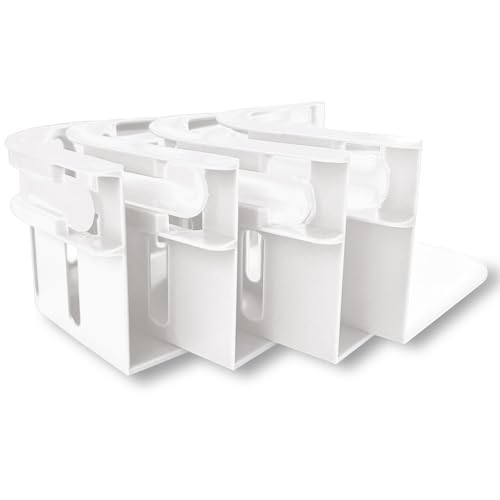Introduction to Aquarium Thermometers: Why They Matter
Understanding Temperature Control
Aquarium thermometers play a crucial role in maintaining the health and well-being of your aquatic pets. Fish and other marine life are highly sensitive to temperature changes, which can impact their metabolism, growth, and overall health. In fact, an unstable aquatic environment can lead to stress and illness, making it essential to keep a close eye on water temperature. By investing in a reliable thermometer, we can ensure that our aquarium maintains the ideal conditions for our fish, promoting a thriving habitat.
The Impact of Temperature on Aquatic Life
Different fish species have their preferred temperature ranges and understanding these needs is vital for their survival. For instance, tropical fish usually thrive in warmer waters, while cold-water species require lower temperatures. By monitoring water temperature with an accurate aquarium thermometer, we can prevent sudden fluctuations that could harm our aquatic friends. This ensures that we are not only providing a suitable environment for our fish but also enhancing their natural behaviours and appearance.
Types of Aquarium Thermometers: Finding Your Perfect Fit
Exploring the Options
When it comes to aquarium thermometers, there are several types to choose from, each designed to suit different preferences and tank setups. We can find stick-on thermometers, which conveniently adhere to the outside of the glass and offer a quick visual reference. Digital thermometers deliver precise readings and many come with additional features, such as alerts for temperature changes. Glass or traditional thermometers provide a classic option, usually filled with coloured liquid, but require a bit more care to read accurately. Understanding these choices allows us to select a thermometer that best meets our specific needs.
Choosing the Right Technology
It’s essential to consider your personal habits and tank requirements when selecting a thermometer. For example, if we frequently check the temperature, a digital thermometer with a large display might be ideal. Alternatively, if our aquarium is smaller or we favour a more minimalist aesthetic, a stick-on option could work well without taking up valuable space. We should assess our setup and choose a type that complements our aquarium while providing reliable readings.
How to Choose the Right Aquarium Thermometer for Your Tank
Assessing Your Tank Conditions
Before making a purchase, we should consider factors like the size of our aquarium and the specific species housed within it. Larger tanks may benefit from multiple thermometers placed at different depths to ensure an even temperature throughout. If we have fish that require precise temperature ranges, investing in a high-quality digital thermometer with accuracy features will be valuable. Evaluating our unique situation helps in determining the most suitable thermometer.
Alignment with Aquatic Species
Additionally, it is crucial to align our thermometer choice with the needs of the fish we’re keeping. Some species are more tolerant of temperature variations, while others require a precisely controlled environment. If we have more sensitive species, prioritising a thermometer that offers quick and reliable readings can prevent health issues in the long run. Familiarising ourselves with the specific temperature requirements for our fish will guide us in selecting the appropriate thermometer.
Setting Up Your Aquarium Thermometer: A Step-by-Step Guide
Placing the Thermometer
Once we’ve chosen the right thermometer, setting it up correctly is essential for accurate readings. First, we should decide on a suitable location within the tank. It’s often best to place the thermometer at mid-water depth to get a balanced reading of the temperature. If using a stick-on thermometer, we should ensure the glass is clean before adhering it for optimal contact. For digital or glass thermometers, attaching them safely and avoiding direct contact with the tank’s heating elements can prevent false readings.
Calibrating for Accuracy
After positioning the thermometer, we might need to calibrate it, especially for digital models. This often involves ensuring it reads the correct temperature with a known reference. Following manufacturer instructions is key to achieving accurate results. Regularly checking the thermometer’s calibration will help us maintain trust in its readings and ensure a healthy environment for our aquatic life.
Maintaining Your Aquarium Thermometer: Tips for Accuracy and Longevity
Regular Checks and Cleaning
To keep our aquarium thermometer functioning correctly, we should routinely check its accuracy and maintain cleanliness. Depending on the type, we can clean our thermometer with warm, soapy water, ensuring that any buildup or debris does not interfere with its functioning. Taking care of our thermometer extends its lifespan and ensures it consistently provides accurate readings.
Monitoring for Clarity
In addition to physical cleanliness, we should also verify that the display remains clear and free from obstructions. For digital thermometers, this might mean changing the batteries when needed, while traditional thermometers should be inspected for any signs of damage. By maintaining excellent care, our thermometer will serve as a reliable tool for monitoring temperature, allowing us to focus on creating the best aquatic environment possible.



































